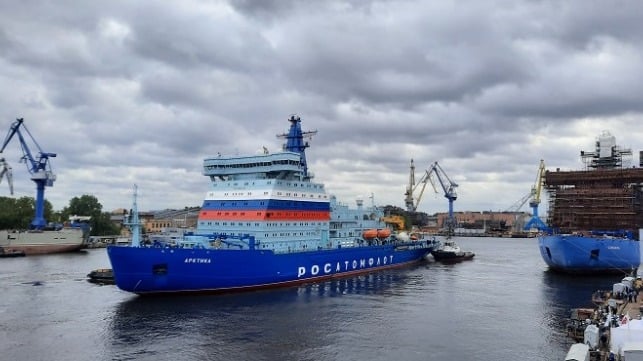Lavrov: Russia is Ready to Defend its Arctic Interests

The receding ice in the Arctic has opened up the planet’s far north to geopolitical competition. With valuable natural resources at stake in the Arctic, the great power states are mobilizing. Russia has already teamed up with China in developing the Northern Sea route, which is a critical shipping passage in the Arctic. NATO – through its Nordic member states - is also building defense cooperation in the Arctic.
In a recent interview, Russian foreign minister Sergey Lavrov said that Russia is ready to defend its interests in the Arctic region.
“We see NATO stepping up drills related to possible crises in the Arctic. Our country is fully ready to defend its interests militarily, politically and from the standpoint of defense technologies,” Lavrov said in an interview for a documentary series titled Soviet Breakthrough.
Since Russia invaded Ukraine in 2022, the security landscape for the Arctic region has shifted significantly. Finland and Sweden have joined the NATO alliance, increasing NATO’s influence in the Arctic. Seven out of eight Arctic Council states are now NATO members. But Lavrov added that this does not mean that Arctic territory belongs to NATO. He also noted that Russia is welcoming non-Arctic countries such as China and India for joint projects in the region.
Russia remains a formidable force in the Arctic, with control of over 50 percent of the region’s coastline and the world’s largest icebreaker fleet. In addition, Russia’s northern territory remains the most industrialized, as 80 percent of Russian gas production comes from the Arctic. For this reason, Russia has built a strong industrial and military presence in the region (compared to other Arctic states).
Russia eyes Arctic navigation as a critical aspect of its dominance in the region. Recent data from the Center for High North Logistics (CHNL) shows that Arctic shipping traffic continues to grow. Specifically, Russia is exporting more of its crude oil and coal to China through the Northern Sea route. In the first two of the summer this year, there were around 30 transit voyages carrying around 1.3 million tons of cargo, according to CHNL.
In addition, the 4,890-teu container vessel Flying Fish 1 will become the first Panamax to transit the Northern Sea Route. The vessel departed St. Petersburg early this month and is expected to reach Qingdao, China around September 26. This voyage will be about 10 days faster than if the vessel used the conventional Suez Canal route.
